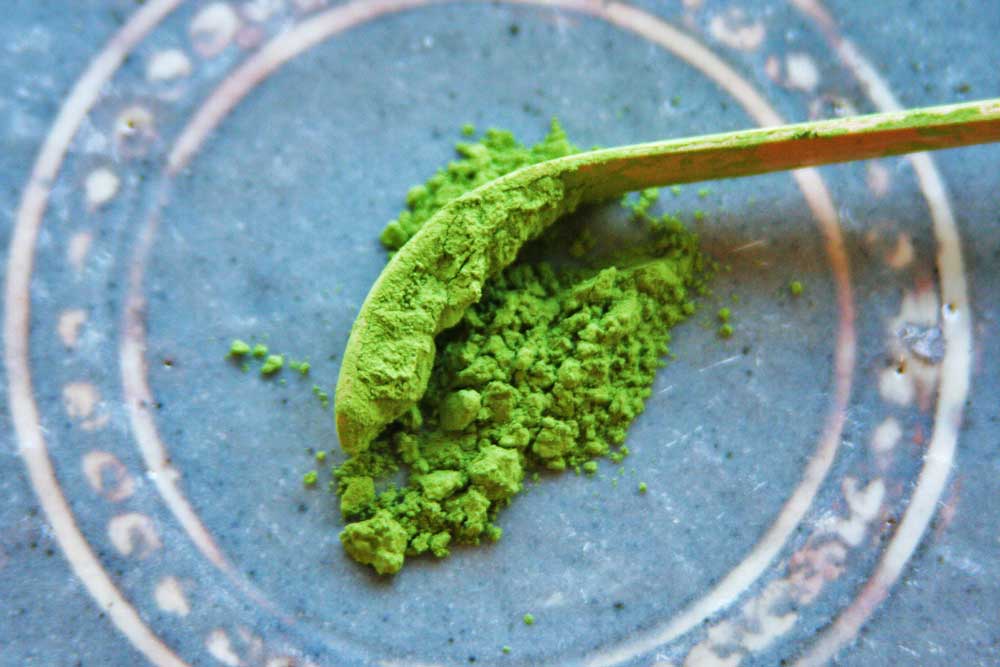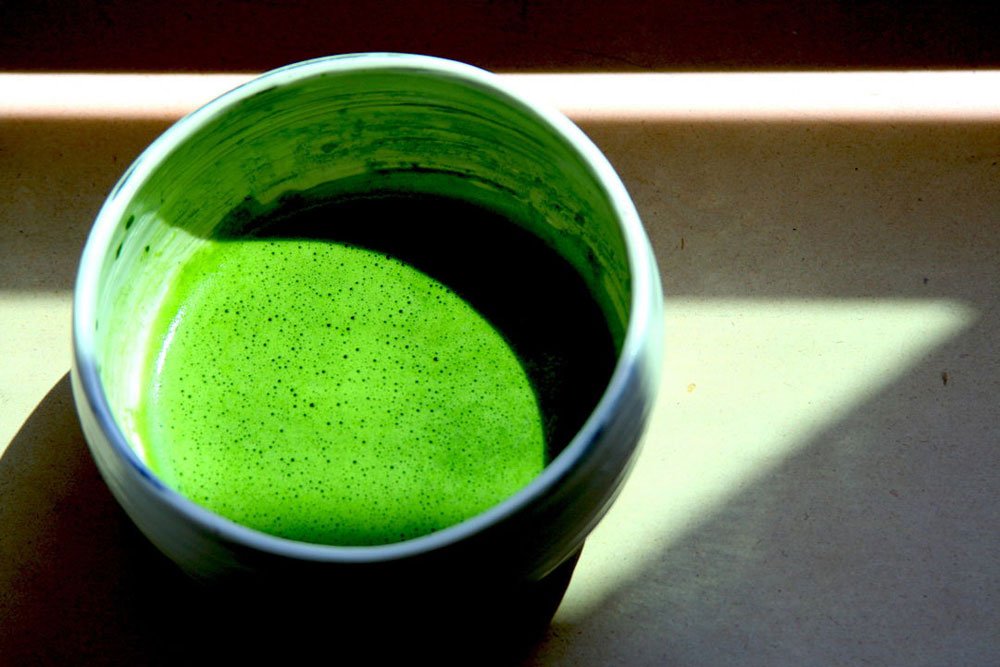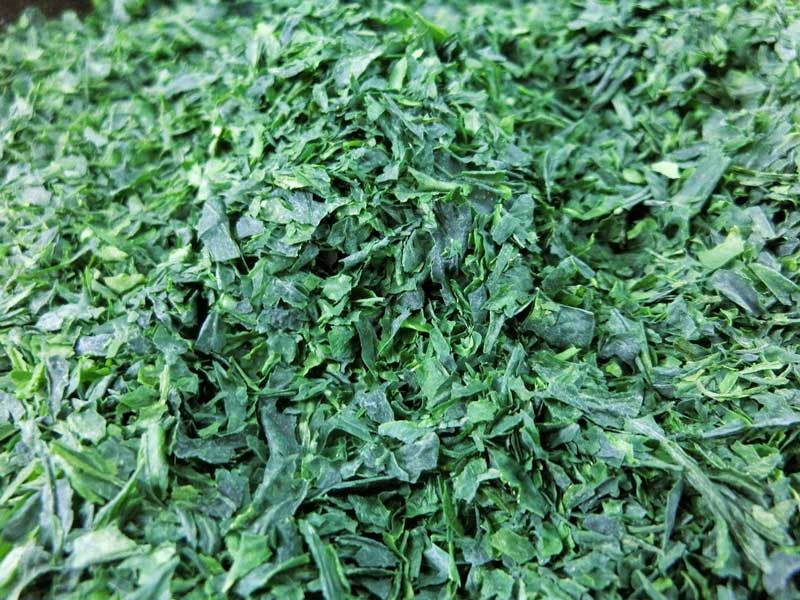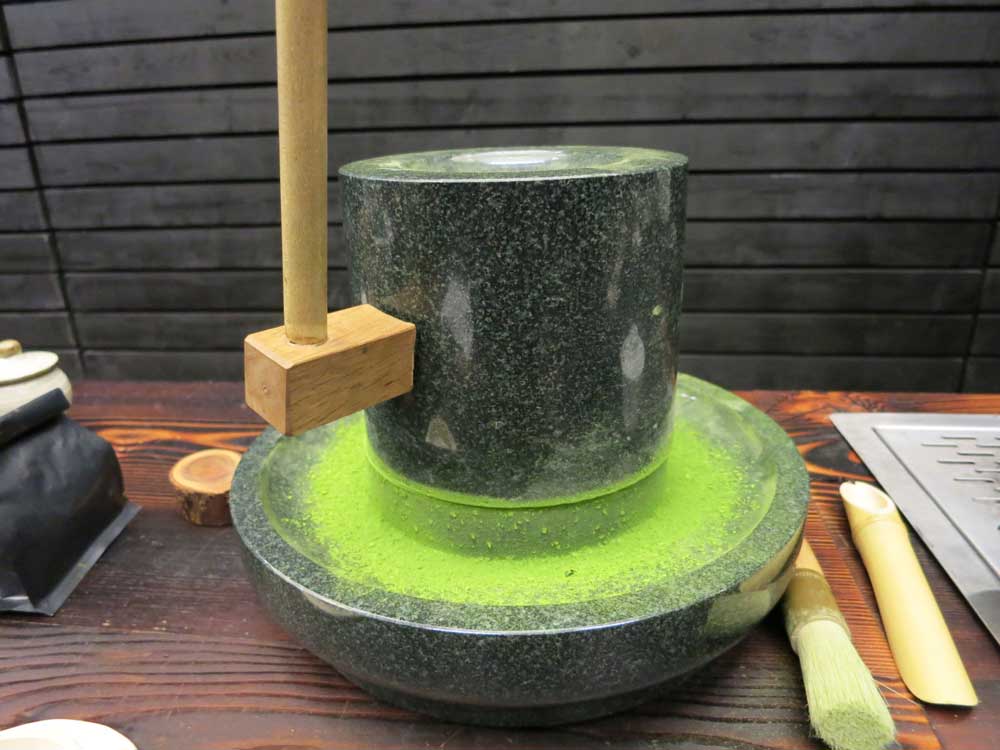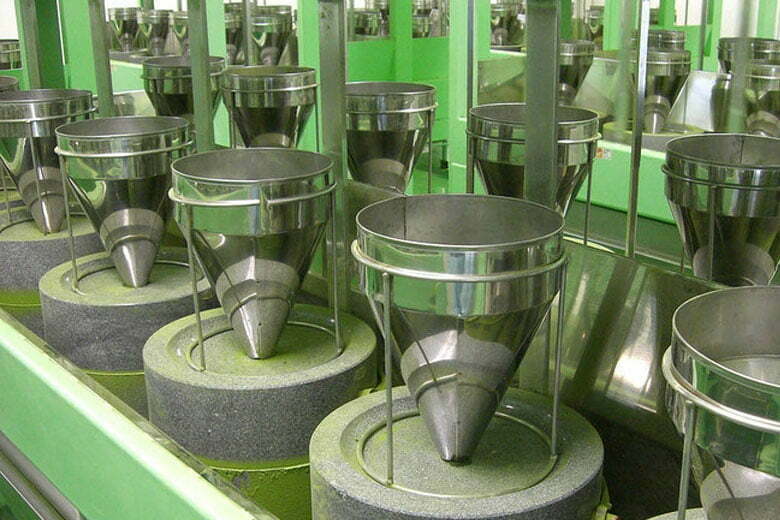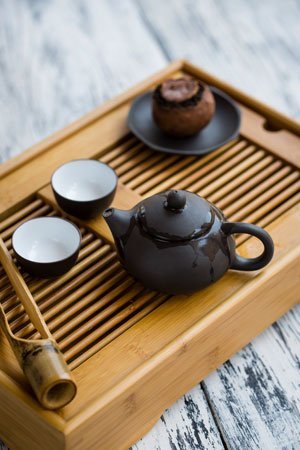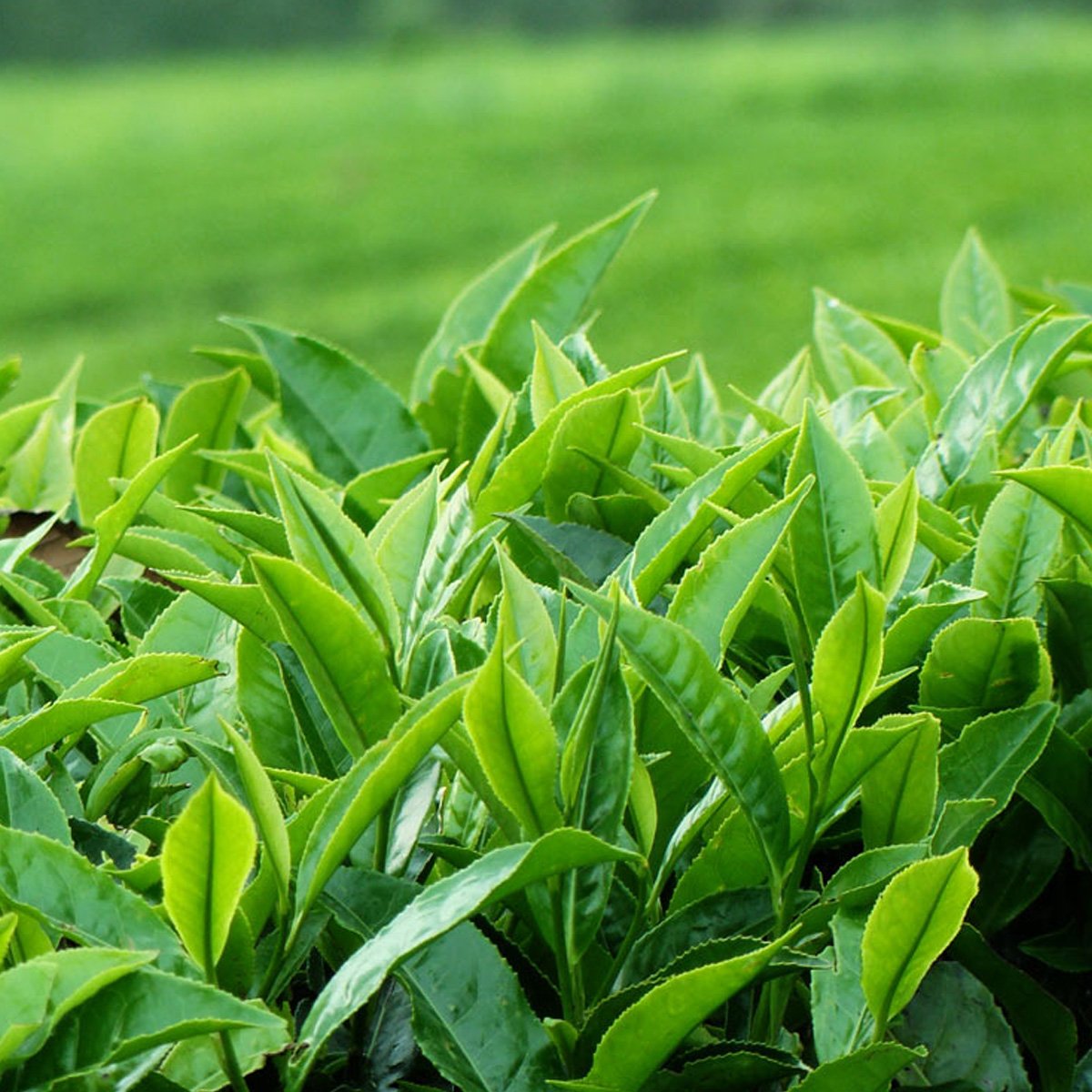The simplest way to describe matcha is as “green tea powder” and matcha is actually powdered green tea. It means “Fine Powdered Tea” in Japanese. The literal meaning is therefore “Matcha Powder”, “Matcha Tea” or the more compact “Matcha Tea” are unfortunate expressions. Although the literal meaning of matcha is High Quality Powdered Tea, Not all green tea powders are matcha .
Green tea powder can only be called matcha if it has two characteristics:
- The tea leaves are protected from the sun.
- The tea leaves are not shaped for the drying process.
Why are the tea leaves used for matcha protected from the sun?
When the tea plants begin to bud, the farmer covers the tea with either a straw roof or a very thick black cloth. Since building the roof is very time consuming, some tea gardens prefer to use shading cloth spread directly over the plants. The outer surface of the shading cloth sometimes has a silver reflective layer to protect the bushes from the heat of the sun.
Since the shade blocks 80-90% of sunlight, the leaves are forced to produce more chlorophyll. As more chlorophyll is produced, the leaves become a deeper green, and the green of the matcha becomes more intense. Without direct sunlight, the leaves develop amino acids that give the tea its “umami,” a sweet and savory flavor often associated with Japanese cuisine. The tea is protected from the sun for 20-40 days, depending on the farmer and location.
Why aren't matcha leaves shaped?
The leaves used to make sencha and gyokuro are steamed and then shaped. However, the leaves that will become matcha are only steamed. After steaming, the leaves are dried in a tencha dryer without shaping to make it easier to remove the stems and veins. Removing the stems and veins is the key to producing fine matcha.
The stemless and veined leaf is called tencha. Tencha, which means "Heaven Tea" in Japanese, is the best part of the leaf and is cut into pieces with a diameter of about 0.5 cm. Tencha is ground into a very fine powder similar to chalk with the help of a stone mill. The grinding process should be done slowly, otherwise the increased temperature will change the flavor and color of the tea and reduce the quality of matcha.
A stone mill can only grind 30-40 grams per hour. Industrial matcha mills can grind larger quantities, but this matcha is of lower quality and is called “industrial matcha.”
As the quality of the tea leaves increases, the tea becomes fuller-bodied, revealing more 'umami' flavor. When mixed correctly, first-class matcha produces a pure, creamy foam that is easy to drink.

